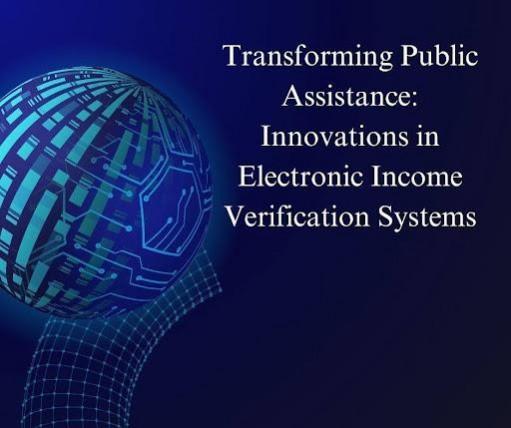
A technology leader with expertise in modernizing public sector operations, Sri Rama Satya Prasanth Vuppuluri, presents a compelling narrative on how Electronic Income Verification (EIV) systems are revolutionizing public assistance programs. This article explores the technological innovations and operational benefits fueling this transformation.
Redefining Eligibility Verification
Electronic Income Verification systems have shifted the paradigm for determining eligibility in public assistance programs. By replacing manual processes with real-time, automated workflows, EIV systems have significantly reduced processing times from weeks to mere hours. For instance, they enable a 76.8% reduction in manual verification efforts, allowing agencies to process three times more applications without additional staff.
The integration of multi-source data enhances accuracy, achieving verification precision of 94.2% compared to 82.7% with manual methods. This transition not only accelerates service delivery but also strengthens program integrity by identifying billions in fraud annually.
Advanced System Architecture and Real-Time Capabilities
At the core of EIV systems lies an advanced technical framework designed for scalability and efficiency. Built on a three-tier architecture, these systems incorporate cutting-edge cryptographic protocols, ensuring robust security for data exchanges. Real-time verification engines cross-reference multiple data sources within seconds, delivering accuracy rates above 90% for complex verifications.
Automation further bolsters efficiency, with machine learning algorithms extracting and validating data at a staggering 94.7% accuracy. These systems also leverage neural networks to detect fraud patterns, reducing false positives by 82% and improving true detection rates.
Analytics and Scalability: The Heart of Efficiency
EIV systems utilize sophisticated analytics to process millions of data points daily. Advanced forecasting models predict resource needs with over 93% accuracy, enabling proactive allocation. These capabilities are complemented by containerized microservices that scale dynamically, maintaining system performance even during peak periods.
This scalability ensures consistent performance, with systems handling up to 28,000 concurrent requests and processing over 7 million daily transactions. The cloud-native infrastructure and distributed nodes support these immense workloads without compromising on speed or accuracy.
Overcoming Implementation Challenges
Implementing such transformative systems requires meticulous planning and robust risk management. Pre-implementation assessments and phased rollouts help mitigate integration failures, reducing potential disruptions by over 76%. Comprehensive training programs, spanning technical and user-specific modules, ensure high adoption rates, with competency gains exceeding 68%.
Additionally, automated monitoring tools detect technical issues within seconds, enabling rapid resolutions. These systems also maintain extensive audit trails, enhancing compliance and transparency.
Long-Term Benefits: Beyond Efficiency Gains
The adoption of EIV systems delivers far-reaching benefits. Operational costs decrease by 68% over two years, while system performance remains consistent under increasing workloads. Automated updates ensure regulatory compliance, adapting to new requirements within days rather than weeks.
Moreover, these systems significantly enhance decision accuracy. For instance, automated income calculations achieve near-perfect precision, reducing error rates by 87%. This accuracy, combined with robust audit mechanisms, streamlines compliance and reduces audit-related queries by 73%.
Best Practices for Successful Deployment
Key strategies for effective EIV implementation include structured planning, pilot programs, and ongoing maintenance. Engaging diverse stakeholders during the planning phase ensures alignment with organizational goals. Pilot testing, covering a representative user base, allows for fine-tuning before full deployment.
Continuous optimization, supported by machine learning and predictive analytics, sustains system efficiency and effectiveness. Organizations dedicating resources to maintenance report dramatic improvements in verification accuracy and operational stability.
In conclusion, Sri Rama Satya Prasanth Vuppuluri underscores the transformative impact of EIV systems in revolutionizing public assistance by enhancing efficiency, transparency, and inclusivity. These systems empower governments and institutions to achieve operational excellence while ensuring equitable and effective service delivery, thereby fostering trust and improving societal outcomes on a broader scale.














